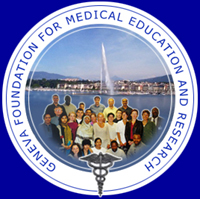Improvement of the teaching of herbal and folk medicine in medical training in Villa Clara
Perfeccionamiento de la enseñanza de la medicina natural y tradicional en la formación médica villaclareña
David Rodríguez Lado, Vianka Momplet Pérez, Wirson Fabelo Rodríguez, Carlos Jesus Benítez Pérez
Villa Clara University of Medical Sciences. Cuba.
ABSTRACT
Taking into account the importance that is currently granted to Herbal and Folk Medicine, a project of improvement is being developed for its education in medical education in Villa Clara, both undergraduate and postgraduate, involving specialists and other professionals. Its purpose is to expand its foundations and utilities to include them in the different programs and impart them in practical classes, through the recognition of medicinal plants planted in a botanical garden within the institution and its different forms of preparation. The objective of this research paper is to disseminate aspects related to its methodological design in order to sensitize professors and students in the research and knowledge of phytotherapy and other pillars of this millenary medicine.
MeSH: medicine, tradicional, research design, strategies, education, medical.
RESUMEN
Teniendo en cuenta la importancia que se le concede actualmente a la Medicina Natural y Tradicional, se está desarrollando un proyecto de perfeccionamiento para su enseñanza en la formación médica villaclareña, tanto en pregrado como en posgrado, donde participan especialistas y otros profesionales. Su propósito es ampliar sus fundamentos y utilidades para incluirlos en los diferentes programas e impartirlos en clases prácticas, a través del reconocimiento de plantas medicinales sembradas en un jardín botánico dentro de la institución y de sus diferentes formas de preparación. El objetivo de esta comunicación es divulgar aspectos relacionados con su diseño metodológico a fin de sensibilizar a profesores y alumnos en la investigación y conocimiento de la fitoterapia y otros pilares de tan milenaria medicina.
DeSC: medicina tradicional, proyectos de investigación, estrategias, educación médica.
Herbal and Folk Medicine (HFM) is internationally known as naturist, energetic, alternative or complementary, but it can´t be denied that it is part of universal culture because it encompasses concepts and practices that have been inherited from generation to generation.
The World Health Organization defines HFM as the sum total of knowledge, skills and practices based on the theories, beliefs and experiences of different cultures, whether explainable or not, used to maintain health and prevent, diagnose, improve or to treat physical and mental diseases.1 In its strategy for the period from 2014 to 2023, it indicates taking advantage of the contribution of Traditional Complementary Medicine (TCM) to well-being, person-centered health care and universal health coverage, as well as promoting safe and effective use through regulation, research and its integration.
The development of this millenary medicine has not been limited to the accumulation of knowledge derived from practice, but also to the design of a complete theoretical body on the art of healing, integrated into modern health systems, which has determined that governments of several countries are responsible for developing legislation in this regard.
HFM has much to offer, especially when used to induce the healing of chronic ongoing problems. Through its proper use, a profound transformation of health can be achieved with less danger, derived from the side effects inherent to pharmacological medicines. However, the widespread belief that this type of product acts slowly and slightly, is not entirely true. Adverse effects can occur if inappropriate doses are chosen or if the patient is prescribed a wrong medicinal plant, even these products can produce adverse reactions depending on the mechanism of action or hypersensitivity to the compound.
Thus, for example, mahuang herb (an ephedra) is traditionally used in China, in the treatment of brief congestion of the respiratory tract without reports of adverse drug reactions, while in the United States of America It is marketed as a dietary supplement, and its prolonged use has caused at least a dozen deaths, heart attacks and strokes.2
Today there is no doubt about the importance of the use of plants in medicine and despite the development achieved by chemical synthesis, they constitute an arsenal of active biological substances.3
According to the WHO, its university training is implemented in 39 countries; However, it is still recognized as a difficulty faced by the member states, the lack of training and qualification of the providers of services and products of the HFM.4 Its application in Cuba shows some significant results, although it is necessary to continue deepening in its consistent implementation:
-
The training and permanent education of health professionals and technicians has been achieved in its different modalities, through the network of medical education centers and health services.
-
The contents of HFM have been progressively incorporated into the curricula of health sciences careers.
-
It was possible to develop master's degree courses in HFM in all the provinces.
The exchange and improvement of health professionals in centers of international excellence in contents related to HFM is promoted.
-
It´s ensured the technical improvement of members of the pharmacological-therapeutic committees of health areas and hospitals.
-
The development of research related to HFM has been expanded.
The Cuban medical sciences universities maintain the HFM as a curricular strategy for the different careers, while integrating these contents as their own courses in the D Plan of Medicine from the academic year 2016-2017 on. In the postgraduate course its development is continued with an updated training program and put into effect in the current school year; At the end of 2014, there were 160 specialists in the country and 110 residents in the different specialties that make up the HFM, including those that are basic to the system: Comprehensive General Medicine and Comprehensive General Dentistry.5
The generalization of HFM has been carried out slowly; its development and practice have produced, on occasions, rejection in numerous doctors in the international and national scope, due to insufficient information in this regard.
The authors of this research work are developing a project to help deepening in the use of HFM by teachers and students of the different careers of Villa Clara University of Medical Sciences based on the program director of HFM and the guidelines of the economic and social policy of the Party and the Cuban revolution. Its general objective is to perfect the teaching of this subject in both the undergraduate and postgraduate and the specific ones are directed to the definition of the philosophical foundations of the HFM, from the perspective of philosophy in Cuba, as the fundamentals that are used today. They are based on traditional Chinese philosophy.
This project allows deepening on the study of the results of the use of HFM in the prevention, curing and rehabilitation of health problems, establishes the interdisciplinary work among philosophy, psychology and comprehensive general medicine, in addition to linking it to other clinical specialties, conditioning a system of actions that lead to their systematic application.
For its conformation, surveys were carried out to students, professors and patients, who contributed with general data, knowledge about the use of HFM, as well as their interest in training in the different topics that were addressed. With the application of the different instruments, learning needs were determined to propose a content system for undergraduate and postgraduate students in order to raise the level of basic information and offer updated content.
Among its topics are the correct identification and rational use of medicinal plants, for which a garden is cultivated that helps its recognition, its preparation is demonstrated in the form of tisanes, decoctions, dressings, among others and the appropriate use of those they are already approved by the Ministry of Public Health. These contents are taught in practical classes. With its correct application the authors hope to achieve, not only a better use of their profits, but the commitment to share this knowledge among professionals, to multiply them in their health areas for the benefit of their patients, family and community.
Declaration of interests
The authors declare no conflict of interest.
BIBLIOGRAPHIC REFERENCES
1. Organización Mundial de la salud. Estrategia de la OMS sobre Medicina Tradicional 2014-2023. [Internet]. 2013 [citado 12 Mar 2018]. Disponible en: http://apps.who.int/iris/bitstream/handle/10665/95008/9789243506098_spa.pdf?sequence=1&isAllowed=y
2. García Milián AJ, Suárez Lugo N. Formación académica de capital humano para el posicionamiento de la medicina natural y tradicional. Rev Cubana de Medicina Natural y Tradicional [Internet]. 2016 [citado 4 Mar 2018];1(1):[aprox. 14 p.]. Disponible en: http://www.revmnt.sld.cu/index.php/rmnt/article/view/21/37
3. Perdomo Delgado J. La Medicina Natural y Tradicional en el contexto de la educación médica superior. EDUMECENTRO [Internet]. 2016 [citado 17 Mar 2018];8(supl 1):[aprox. 4 p.]. Disponible en: http://scielo.sld.cu/scielo.php?script=sci_arttext&pid=S2077-28742016000500001&lng=es
Submitted: 30 de abril de 2018
Accepted: 14 de mayo de 2018
David Rodríguez Lado. Villa Clara University of Medical Sciences. Cuba.
E-mail: davidrl@infomed.sld.cu
Copyright (c) 2018 EDUMECENTRO










